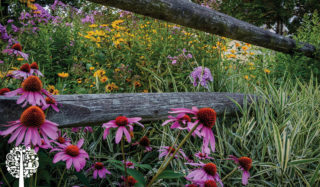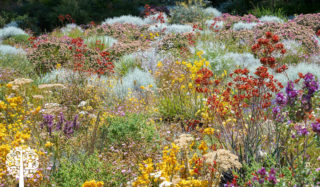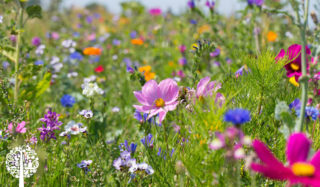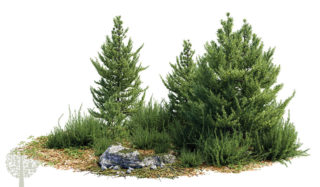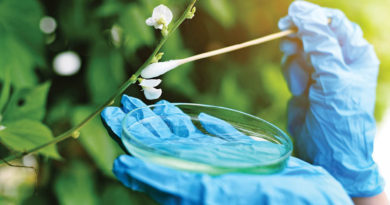Plant A Native Garden Your Neighbors Will Love |
Many believe native plants lead to an unkempt and messy garden full of unwanted insects. For these reasons, some municipalities and neighbourhoods regulate the use of native plants in yards. But there are many benefits to including these low-maintenance beauties in your landscape. These five easy tips will help you create an award-winning space worthy of a magazine cover!
I often see the same landscape in neighbourhood yards, and they do not include communities of diverse native plants and pollinating insects. As a landscape designer and gardener, I work to convince homeowners that diversity in the garden is essential. Native habitat gardens repair barren and degraded landscapes, connecting homeowners with the natural world and giving them a role in improving the landscape and contributing to reversing climate change.
These gardens also add to the value of the neighbourhood; investing in landscaping raises home prices. Gardens create a quieter area without the loud sounds of regular yard maintenance machines. A native landscape is an oasis for insects, bees, butterflies, and birds.
5 Steps To Creating A Native Garden
1. Create a cohesive design
2. Plan how people will walk through the garden
3. Choose plants
4. Choose materials
5. Plan for manageable maintenance.
STEP 1: Create A Cohesive Design
Although we may be most excited about the plants themselves, we first need a plan for where the garden will exist and the best spots for each plant.
The edges of every design play a significant part in its cohesiveness. Think of your yard as a picture frame containing the parts of your garden. Each area fits together like a puzzle. The edges that meet the neighbours’ yards, the sidewalk, street, and common areas must be inviting. For instance, a band of mown grass backed up with shorter native plants creates positive interest in your garden.
You will need a map or site plan of your yard so you know the size of the area for ordering plants and materials. You can do the measuring, but you can often find the information in your county records department, along with the location of property lines and utility easements. This will save you from planting beyond your lot and on top of utility lines. Generally, planting perennials and grasses over deep utility lines on your property can be done, but be prepared for the utility company to tear up the area for repairs.
Make a list of elements you will need in the garden, such as a patio, a pergola, a shed, benches, and play equipment. Then, think about how you will access each area, either through mown grass or stone or paver paths. You will need to reach all areas to observe the habitat you have created and to maintain the garden.
STEP 2: Plan Access Points
A well-planned garden space will draw visitors into the yard and up to the front door; native plants will help you achieve this welcoming effect. Perennials, ornamental grasses, and a small tree with seating on the porch or amongst the plants create an outdoor vestibule. Add to the sensory experience by using shorter native plants along the walk up to the house.
Use the same design tools in the backyard. Incorporate paths from the back door or continue one along the side of the house. Guests do not want to be greeted by six feet tall grasses and perennials as they step into the garden. Instead, create a winding path that does not reveal all the puzzle pieces at once. Punctuate flower combinations with a handful of tall, majestic plants.
Provide stopping points with benches where people can take in the best views. If you plan a pergola, you will need a path leading to it.
STEP 3: Choose Plants
Plant selection is the fun part! Spend some time researching plants native to your area. Some species grow in many parts of the country. Understand the conditions the plants of choice need to thrive, including soil type, moisture and light requirements, and heat and cold tolerance. Learn about the birds, butterflies, insects, and other wildlife native to your area that you would like to attract to the habitat you create. Look for those plants in catalogues, garden centres, and plant sales.
Native gardens improve soil characteristics that resist erosion and create favourable growing conditions for native habitats. As a result, fewer resources, such as water and mower fuel, will be needed to maintain the garden. You also will not need any fertilisers or pesticides.
To imitate native prairies and meadows, design your garden with plants of different sizes. However, use only small and medium-sized plants to scale the plan to a smaller footprint. When seated on a bench in a garden, the tall plants can overwhelm a visitor. However, they can also create an excellent all-natural privacy screen in summer.
Buy plants in flats or small pots. These little guys catch up with gallon plants quickly and adapt well to transplanting. Place them about a foot apart. Using a bulb-planting attachment on an electric drill works well, especially if your ground is hard.
Bed preparation requires the removal of all existing plants with a sod cutter or using a non-residual herbicide. Do not work the soil, as digging will bring weed seeds to the surface.
Favourite Native Plant Choices
Perennials
- Butterflyweed, Asclepias tuberosa
- Liatris, Liatris sp.
- Black-eyed Susan, Rudbeckia hirta
- Salvia, Salvia sp.
- Coreopsis, Coreopsis sp.
Grasses
- Big Bluestem, Andropogon gerardii
- Prairie Dropseed, Sporobolus heterolepis
- Indian Grass, Sorghastrum nutans
Shrubs
- New Jersey Tea, Ceanothus americanus
- Chokeberry, Aronia sp.
Trees
- Pagoda Dogwood, Cornus alternifolia
- Redbud, Cercis canadensis
STEP 4: Choose Materials
In addition to choosing and buying plants, you will need hard materials to create pathways.
Paths made from stepstones or pavers keep feet clean and dry. They also add a design element and vary in size, shape, and colour. Using crushed rock or gravel in the paths is possible, but you need an edge because these materials shift and travel.
An excellent choice for native gardens is stone or cast stone with a natural appearance. However, it is also possible to introduce a different material and style. Use modern hard materials and furnishings for a look that will catch people’s attention.
Pergolas, patios, seating, firepits, and play areas give your native landscape a friendly, inviting vibe.
STEP 5: Plan for Manageable Maintenance
Your native plant garden will not need fertilisers! When the soil is poor, compacted or shallow, use organic soil amendments to make it plantable. If you need to mulch due to high heat and drought, use a thin layer of compost. It is easy to over-improve the soil; native plants will proliferate and fall over, creating an unkept-looking garden.
These gardens respect the health of your family and neighbours since they are chemical-free. The landscape does not pollute the water, soil, or air. Consider including a water management plan so that rainfall stays on the site and does not run off into nearby yards.
While reasonably low maintenance, unfortunately, the task of weeding the native garden will not disappear completely. Until plants cover the soil surface, you will need to weed between them. Planting density, no-till practices, and increasing soil health will eventually reduce weed pressure.
Native plants do not require a lot of water. However, you will need to provide sufficient moisture the first season you plant them. Small, young plants need evenly moist soil; they will tolerate drought as they age. Placing soaker hoses on the ground, winding them through the garden, and covering them with a sprinkling of compost is a great idea. As the new plants grow, you will not notice the soaker hoses. Leave them in place for occasional use in the second year after planting.
When you cut down the plants is up to you. While you may not love the look of spent plants, leaving them as long as possible is essential. Native insects lay eggs in hollow stems, and birds use dead plant material as a feed source in the winter and for protection from the wind and cold. Finally, resist the urge to deadhead your flowers; the birds love the seed heads!
Enjoy your native garden!


